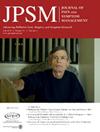First-Ever Global Ranking of Palliative Care: 2025 World Map Under the New WHO Framework
IF 3.5
2区 医学
Q2 CLINICAL NEUROLOGY
引用次数: 0
Abstract
Context
Despite progress in policy and advocacy, global palliative care development remains highly uneven, with large segments of the population lacking access to quality services. A new WHO framework has provided an updated methodology for assessing national palliative care systems.
Objectives
To assess the current state of palliative care development worldwide using the WHO framework and to produce the first global ranking of countries based on their performance across 14 indicators.
Methods
A cross-sectional, mixed-methods study was conducted across 201 countries and territories between 2023 and 2025. Trained national consultants conducted a structured survey based on WHO indicators. Scores were assigned across six domains: policy, essential medicines, service delivery, education, research, and community empowerment. Responses were validated and analyzed to produce a Global Development Score and to classify countries into four development levels: Emerging, Progressing, Established, and Advanced.
Results
Of the 201 countries assessed, 40% were classified as Emerging and 28% as Progressing, representing half the global population. Only 14% reached the Advanced level, and 17% were classified as Established. Significant gaps in access to essential medicines and specialized education persist—even in some high-income settings. Despite limited resources Thailand, Uganda,Chile, and Uruguay stand out as regional examples of advanced development.
Conclusion
This study presents the first global ranking of palliative care development based on WHO indicators. The results highlight persistent disparities and offer a tool for targeted improvement. The Global Development Score enables countries to benchmark progress, identify gaps, and develop strategic responses to expand access and alleviate serious health-related suffering.
首份姑息治疗全球排名:世卫组织新框架下的2025年世界地图。
背景:尽管在政策和宣传方面取得了进展,但全球姑息治疗的发展仍然极不平衡,大部分人口无法获得高质量的服务。世卫组织新的框架为评估国家姑息治疗系统提供了更新的方法。目标:利用世卫组织框架评估全球姑息治疗发展的现状,并根据各国在14项指标上的表现,编制首个全球国家排名。方法:在2023年至2025年期间,在201个国家和地区进行了一项横断面混合方法研究。训练有素的国家顾问根据世卫组织指标进行了结构化调查。得分分布在六个领域:政策、基本药物、服务提供、教育、研究和社区赋权。对回答进行验证和分析,得出全球发展评分,并将各国划分为四个发展水平:新兴、进步、成熟和先进。结果:在评估的201个国家中,37%被归类为新兴国家,32%被归类为发展中国家,占全球人口的近一半。只有12%达到了高级水平,18%被归类为已建立。在获得基本药物和专业教育方面仍然存在巨大差距——即使在一些高收入环境中也是如此。尽管资源有限,泰国、智利和乌拉圭作为区域先进发展的范例脱颖而出。结论:本研究提出了第一个基于世卫组织指标的全球姑息治疗发展排名。结果突出了持续存在的差异,并为有针对性的改进提供了工具。全球发展得分使各国能够对进展进行基准测试,确定差距,并制定战略对策,以扩大获取机会并减轻与健康有关的严重痛苦。
本文章由计算机程序翻译,如有差异,请以英文原文为准。
求助全文
约1分钟内获得全文
求助全文
来源期刊
CiteScore
8.90
自引率
6.40%
发文量
821
审稿时长
26 days
期刊介绍:
The Journal of Pain and Symptom Management is an internationally respected, peer-reviewed journal and serves an interdisciplinary audience of professionals by providing a forum for the publication of the latest clinical research and best practices related to the relief of illness burden among patients afflicted with serious or life-threatening illness.

 求助内容:
求助内容: 应助结果提醒方式:
应助结果提醒方式:


